When you are responsible for the quality of the gift. The history of one blockchain experiment
At one of the brainstorming sessions of our team at Digital Transformation Group (DTG) , dedicated to the development of our Tracelabel blockchain system, the idea was born: what if traditional gifts to clients and partners tell about themselves?
But the truth is! This can arouse the curiosity of customers and, most importantly, allow us to show the capabilities of the blockchain to many people. And we can understand the conversion of contact through this type of communication with the client.
And so the concept of our New Year's promotion appeared, which we decided to hold for the customers of the LANIT group of companies, which includes DTG. So, gifts became “smart” overnight, and we got some interesting statistics that I will introduce you to in this article. Ahead is a series of gender holidays. We hope that our ideas will inspire readers of the Lanitovsky blog on Habré.
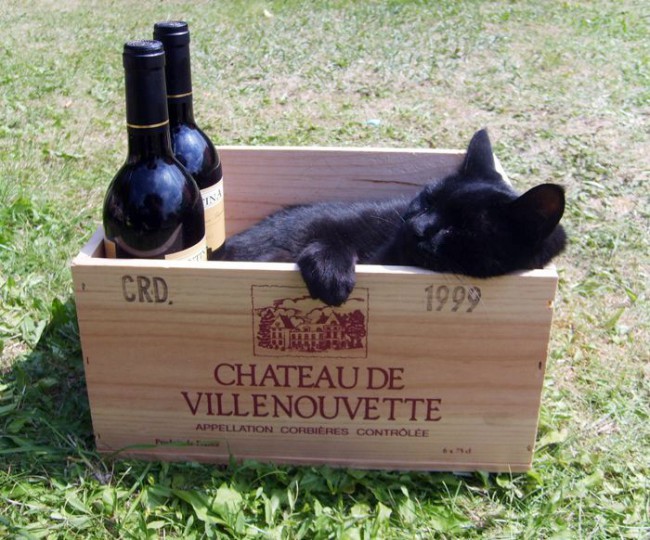 A source
A source
The TOP 10 most common gifts must include alcohol. But at the same time, this is one of the most risky options, since there are a lot of fake, low-quality products on the market. How to be sure that, for example, this Angostura 1919 rum was actually produced in Trinidad and Tobago? Fortunately, we are confident in our suppliers, but it is impossible to deny the fact that for the majority the problem of counterfeiting is relevant and brings especially much trouble on holidays. Therefore, we decided to talk about our Tracelabel system for tracking the life cycle of goods using the example of alcohol.
So, in order to show customers the capabilities of Tracelabel, we stuck a unique QR code on each gift bottle, when scanning it, the client automatically switched to a web application with information about a particular bottle.
In the application you can see:
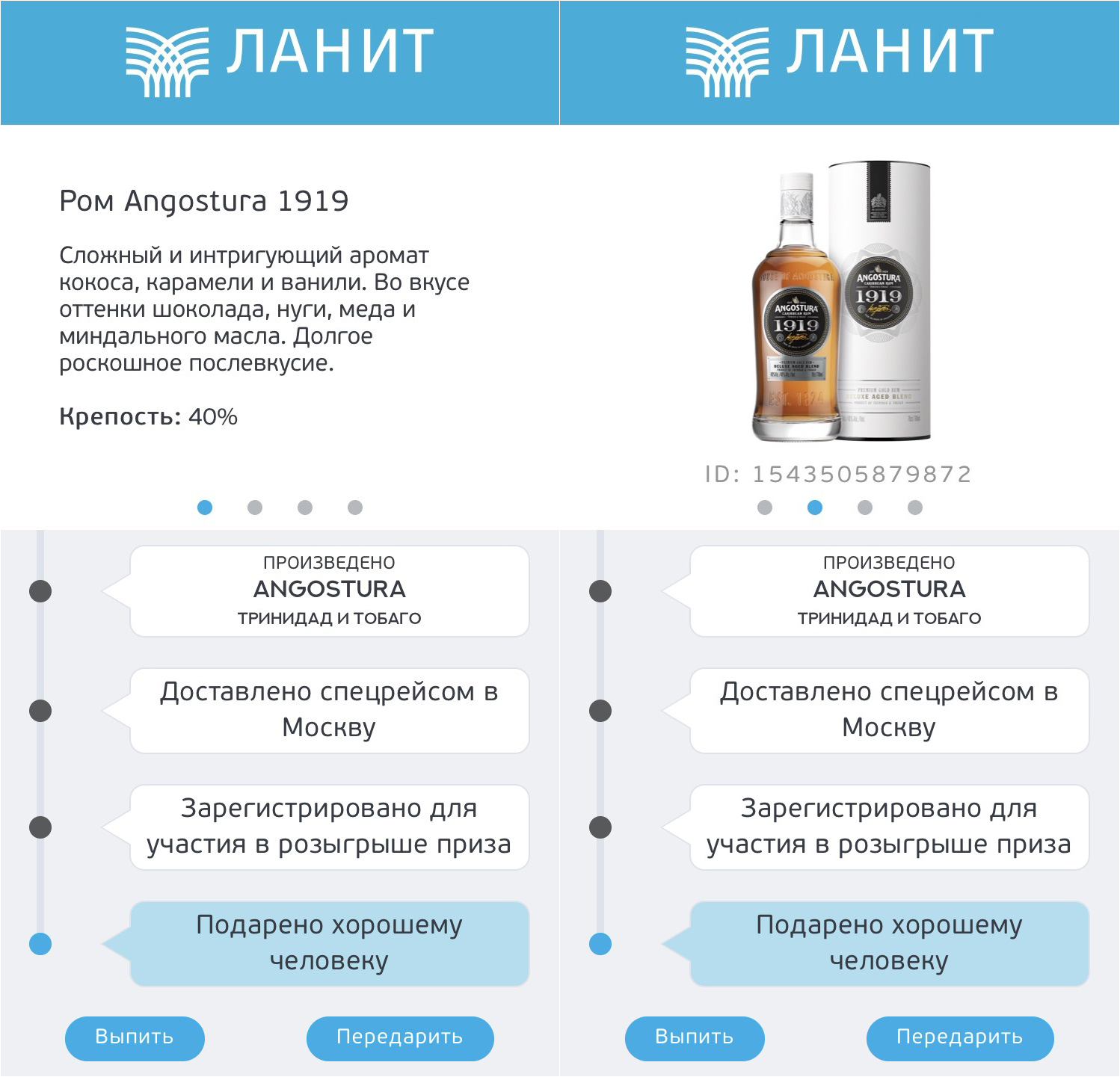
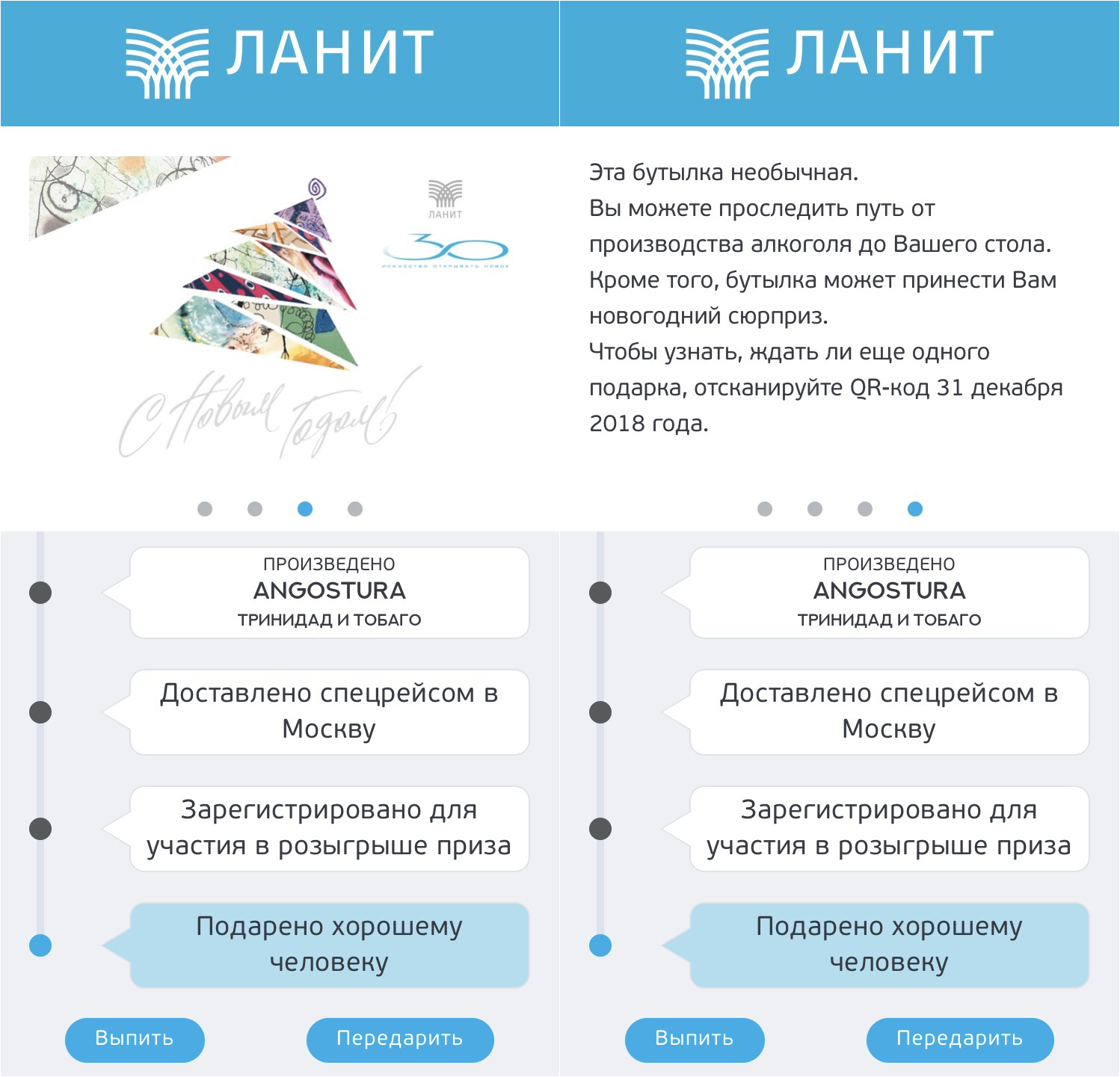
A blockchain is used to store a chain of changes in product status with protection against change / forgery. We write every bottle with its unique code on the blockchain. The chain stores information about who and where the bottle was made, that it was delivered to Moscow, that it was donated.
But that's not all. Further, the owner begins to manage the life cycle of the bottle. He may note the fact that the bottle is drunk, or donate the bottle. All this is also recorded on the blockchain. Hyperledger Fabric was
chosen as the implementation of the blockchain network . Frontend is built using React JS.
Server components are designed with micro-service architecture in mind. The main server language is Go lang, interaction with the blockchain network is implemented using GoSDK. A system based on the Google Cloud platform is deployed.
To carry out business operations within the network (creating a new product, changing status, etc.) Chaincode is used, which is also implemented in Go.
To reduce the block size, part of the product information that is not critical in case of a change (in this case it is a characteristic of the wine) is stored in a relational database. And in the blockchain, the main parameters are written, which require confirmation in case of changes. This is the state of the product and its history, as well as those parameters that must be guaranteed to be unchanged - a win mark.
We decided to play a little with customers and registered each bottle in the drawing (which is also fixed in the blockchain). On December 30, five winning bottles were randomly selected in the system. In order to check whether the bottle is winning, it was necessary to scan the QR code on December 31 and, in case of winning, confirm the sending of the automatically generated letter to LANIT.
In total, we registered in the system 3,769 bottles of 17 different positions of alcohol and got a pretty good conversion: almost 10% (330 bottles) were scanned. These are those with the “Given” status.
By the way, with the change of status to “Given”, everything turned out to be not so simple. Given the number of bottles and the New Year’s fever, we decided not to load the staff and not ask them to scan the label at the time of donation and manually note the fact of donation. Therefore, the status changed automatically at the time of the first scan.

Below are the scan statistics collected in Mixpanel.
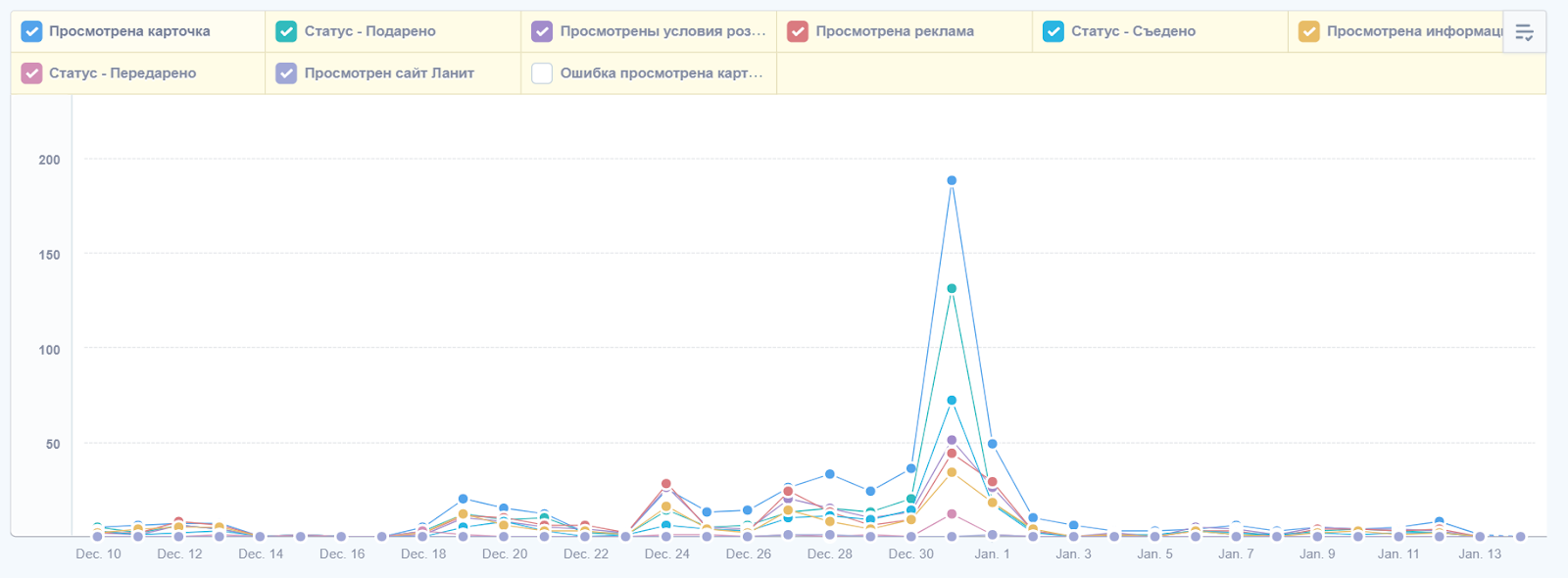 Chart 1
Chart 1
Unfortunately, out of the 330 people who scanned the tag, only one hit the winning bottle. This person scanned it on December 27 and did not re-scan it on December 31 to find out the results of the draw. Consequently, he did not find out that we still have gifts for him, and we could not find out his name and address.
Below are the statistics for this bottle.
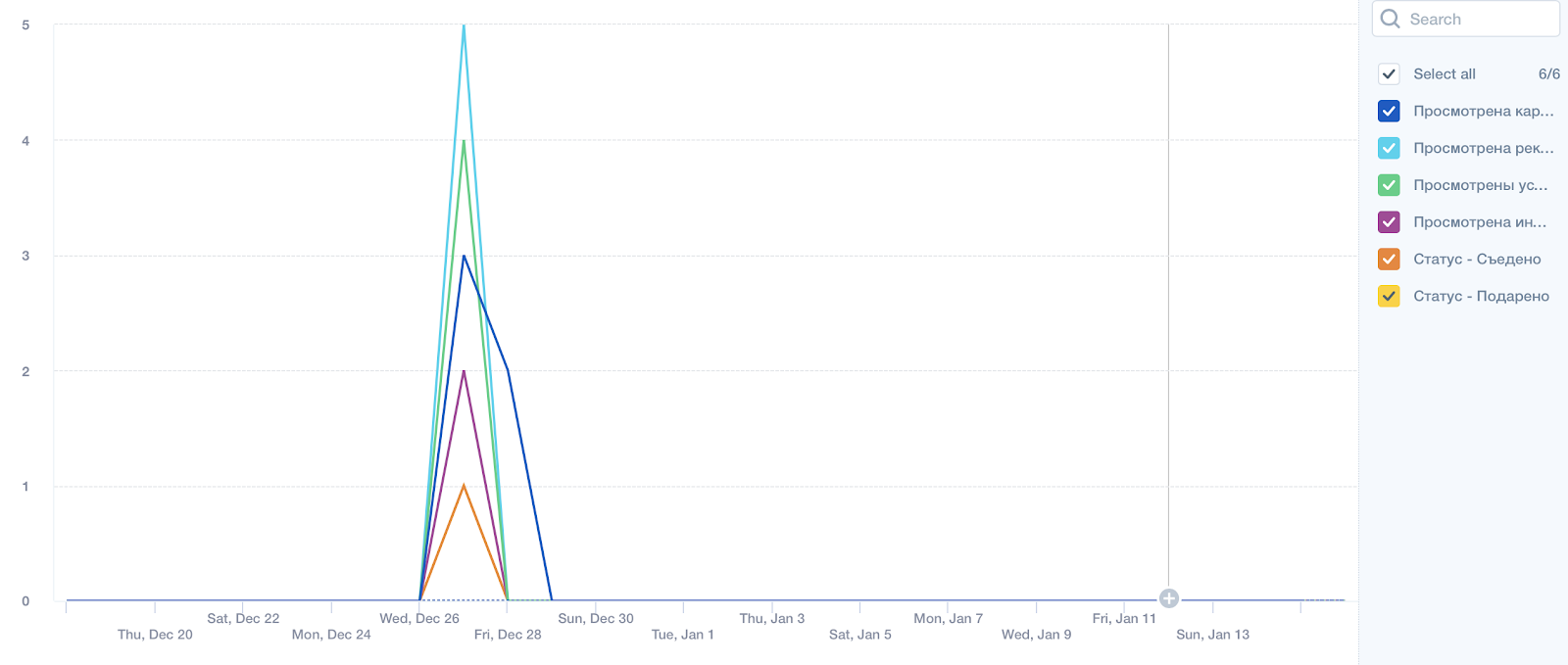 Chart 2
Chart 2
Our only fear regarding the date of the draw was justified. December and January are the holidays, so not everyone received their gifts for the New Year, respectively, not everyone was able to participate in the lottery. We see that tags continue to scan to this day. Next time we will stretch the rally for a longer period.
Perhaps you have a question, how did we label 3769 bottles?
It sounds crazy, but it happened manually:

This is not the first time we have used blockchain in marketing and will continue to practice it. If we talk about solutions based on Tracelabel, the process is debugged and does not take up a lot of resources. For example, at various conferences, at our stands, we give out blockchain chocolates, and then we look at how many of them were eaten and how many were donated for fun. And if you want to know what happens with the gifts that you give to your customers, we at DTG are ready to help.
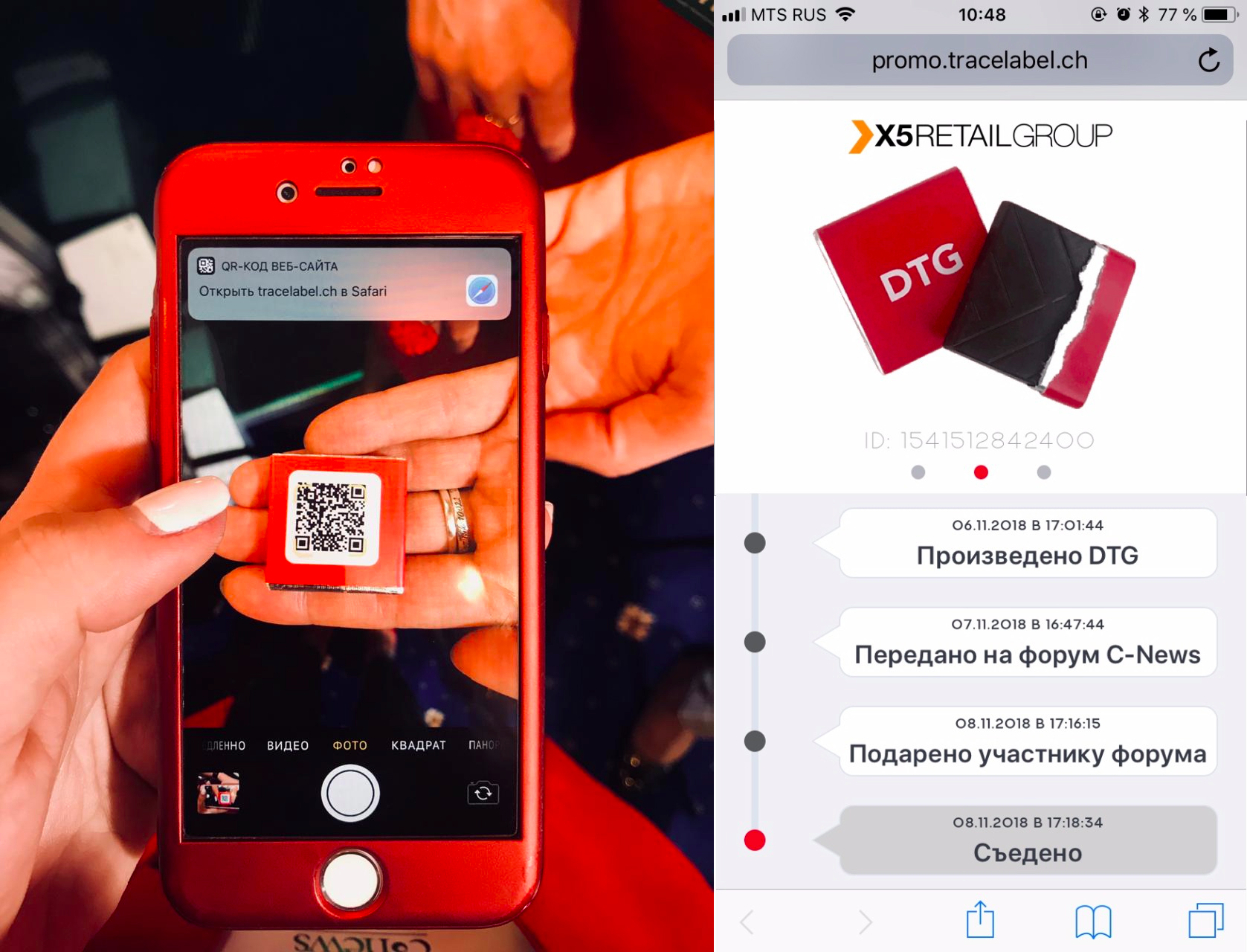
Is this interesting to the audience? Of course. In our New Year’s campaign, the peak of scans fell on December 31 (this is clearly visible on the first chart), which means that people read the rules for participating in the drawing and followed them.
Do you use IT solutions in your holiday events? Maybe you have an interesting merch that you accompany with some gaming applications? Share in the comments.
But the truth is! This can arouse the curiosity of customers and, most importantly, allow us to show the capabilities of the blockchain to many people. And we can understand the conversion of contact through this type of communication with the client.
And so the concept of our New Year's promotion appeared, which we decided to hold for the customers of the LANIT group of companies, which includes DTG. So, gifts became “smart” overnight, and we got some interesting statistics that I will introduce you to in this article. Ahead is a series of gender holidays. We hope that our ideas will inspire readers of the Lanitovsky blog on Habré.

So what is the New Year promotion?
The TOP 10 most common gifts must include alcohol. But at the same time, this is one of the most risky options, since there are a lot of fake, low-quality products on the market. How to be sure that, for example, this Angostura 1919 rum was actually produced in Trinidad and Tobago? Fortunately, we are confident in our suppliers, but it is impossible to deny the fact that for the majority the problem of counterfeiting is relevant and brings especially much trouble on holidays. Therefore, we decided to talk about our Tracelabel system for tracking the life cycle of goods using the example of alcohol.
Tracelabel is a universal application platform based on blockchain and IoT technologies, designed to track the life cycle of any goods. Tracelabel is designed to unite all ecosystem participants from a producer to a consumer in a single digital space, effectively manage supply chains, and solve personalized communication problems with a customer.
So, in order to show customers the capabilities of Tracelabel, we stuck a unique QR code on each gift bottle, when scanning it, the client automatically switched to a web application with information about a particular bottle.
In the application you can see:
- the story of the promotion of the bottle and its status change, a certain emulation of the supply chain,
- description of gift alcohol with its characteristics,
- Unique bottle number
- LANIT greeting card with the transition to the official website,
- information about the New Year rally.


And where does the blockchain come from?
A blockchain is used to store a chain of changes in product status with protection against change / forgery. We write every bottle with its unique code on the blockchain. The chain stores information about who and where the bottle was made, that it was delivered to Moscow, that it was donated.
But that's not all. Further, the owner begins to manage the life cycle of the bottle. He may note the fact that the bottle is drunk, or donate the bottle. All this is also recorded on the blockchain. Hyperledger Fabric was
chosen as the implementation of the blockchain network . Frontend is built using React JS.
Server components are designed with micro-service architecture in mind. The main server language is Go lang, interaction with the blockchain network is implemented using GoSDK. A system based on the Google Cloud platform is deployed.
To carry out business operations within the network (creating a new product, changing status, etc.) Chaincode is used, which is also implemented in Go.
To reduce the block size, part of the product information that is not critical in case of a change (in this case it is a characteristic of the wine) is stored in a relational database. And in the blockchain, the main parameters are written, which require confirmation in case of changes. This is the state of the product and its history, as well as those parameters that must be guaranteed to be unchanged - a win mark.
What kind of a draw?
We decided to play a little with customers and registered each bottle in the drawing (which is also fixed in the blockchain). On December 30, five winning bottles were randomly selected in the system. In order to check whether the bottle is winning, it was necessary to scan the QR code on December 31 and, in case of winning, confirm the sending of the automatically generated letter to LANIT.
Few numbers
In total, we registered in the system 3,769 bottles of 17 different positions of alcohol and got a pretty good conversion: almost 10% (330 bottles) were scanned. These are those with the “Given” status.
By the way, with the change of status to “Given”, everything turned out to be not so simple. Given the number of bottles and the New Year’s fever, we decided not to load the staff and not ask them to scan the label at the time of donation and manually note the fact of donation. Therefore, the status changed automatically at the time of the first scan.

Below are the scan statistics collected in Mixpanel.

Has anyone won a prize?
Unfortunately, out of the 330 people who scanned the tag, only one hit the winning bottle. This person scanned it on December 27 and did not re-scan it on December 31 to find out the results of the draw. Consequently, he did not find out that we still have gifts for him, and we could not find out his name and address.
Below are the statistics for this bottle.

Our only fear regarding the date of the draw was justified. December and January are the holidays, so not everyone received their gifts for the New Year, respectively, not everyone was able to participate in the lottery. We see that tags continue to scan to this day. Next time we will stretch the rally for a longer period.
Perhaps you have a question, how did we label 3769 bottles?
It sounds crazy, but it happened manually:
- thought out a concise label design,
- bought a printer for printing labels with direct thermal technology,
- designed a sticker in the embedded software, which also has a QR code generator,
- started in-line printing,
- and the three of us somewhere in 4 hours pasted labels on all the bottles, inventing various optimization processes.

This is not the first time we have used blockchain in marketing and will continue to practice it. If we talk about solutions based on Tracelabel, the process is debugged and does not take up a lot of resources. For example, at various conferences, at our stands, we give out blockchain chocolates, and then we look at how many of them were eaten and how many were donated for fun. And if you want to know what happens with the gifts that you give to your customers, we at DTG are ready to help.

Is this interesting to the audience? Of course. In our New Year’s campaign, the peak of scans fell on December 31 (this is clearly visible on the first chart), which means that people read the rules for participating in the drawing and followed them.
Do you use IT solutions in your holiday events? Maybe you have an interesting merch that you accompany with some gaming applications? Share in the comments.
And we also have vacancies!
